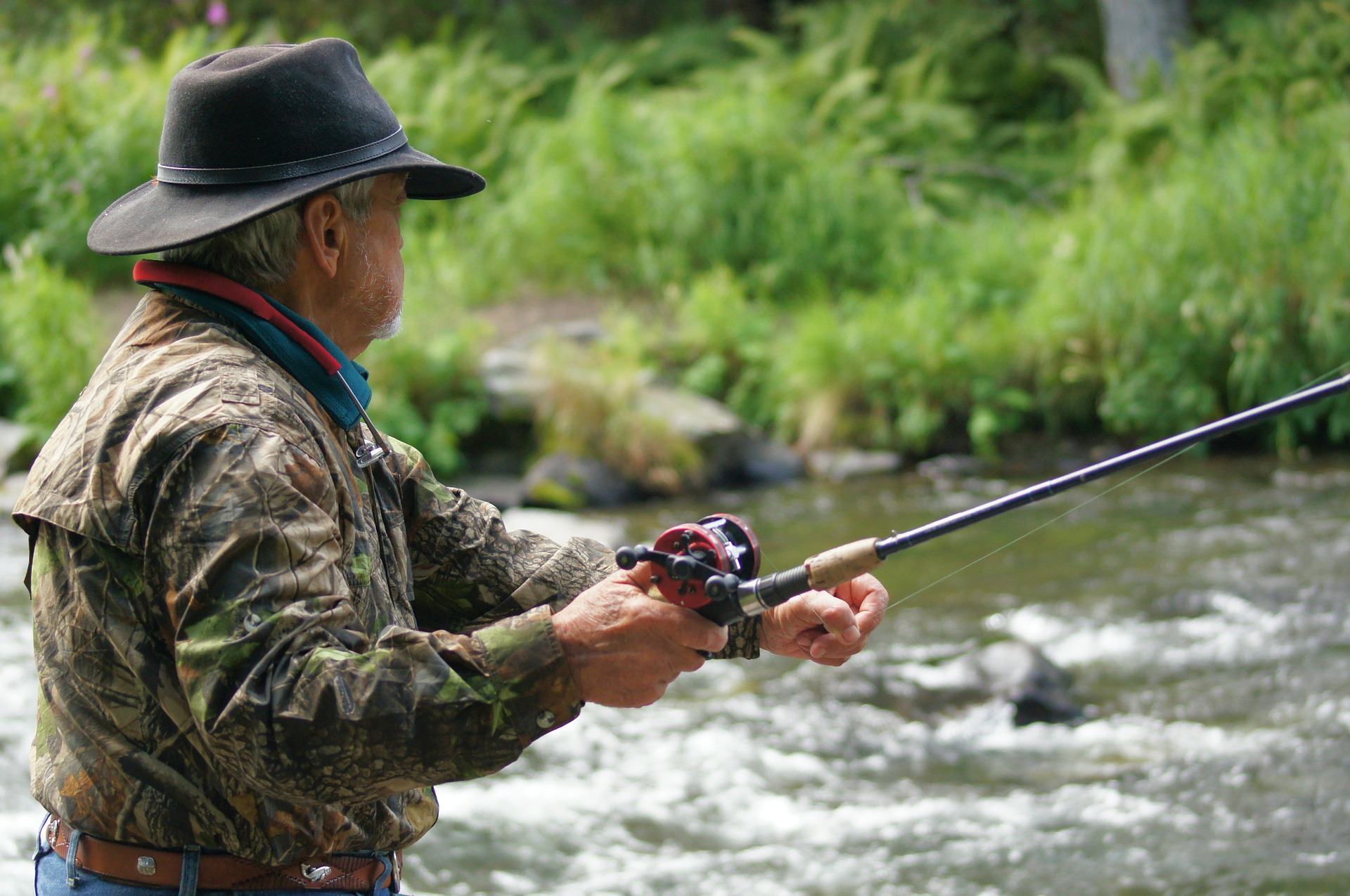Written by Michele Wheat

Fly fishing is a type of fishing that involves using a specialized fishing rod and reel as well as artificial flies for bait. Fly rods are more flexible than standard fishing rods, and they are longer. The goal of fly fishing is to trick fish into thinking the artificial flies are real bugs either sitting on the top of the water or sinking just under the surface. Learning how to cast with a careful flick of the wrist is one of the most important skills you will need to fly fish. Many people who enjoy fly fishing also like to make their own artificial flies using materials such as feathers, wire, thread, hair, beads, and more. You can try fly fishing in many different bodies of water, including streams, lakes, and even in the ocean.
Fly Fishing Techniques
Of the techniques involved with fly fishing, casting will probably require the most practice. When learning how to cast, it's helpful to practice with a rod rigged with yarn to get comfortable with the process. You might try practicing casting in your backyard before you are ready to cast into the water.
- Hold the rod so your thumb points toward the tip of the rod and your wrist is straight. Fix the line so it's straight in front of you, with the tip of the rod pointing toward the water.
- Pull out a 4-foot loop of line and hold it securely with the pointer finger of your rod hand.
- Move your arm backward at the elbow without moving your wrist.
- Load the line by pulling it off the water just until the point where the fly is about to pop off the water.
- Stop and move your arm forward again so the fly lands on the water gently. At the same time, let go of the looped line you were holding with your pointer finger. This allows the fly to travel farther over the water.
- Lower the rod tip with the line to finish the cast.
Bait Options
Fly fishing anglers use many different types of bait designed to look like real bugs that fish like to eat or to catch the attention of fish. Flies can be dry or wet. A dry fly is made to float on the surface of the water, and a wet fly is weighted so it sinks a couple of inches under the surface. You can buy bait, or you can try fly-tying, which is making your own bait. Many fly fishing anglers enjoy the process of fly-tying.
- Before you choose your bait, observe the insects the fish are eating in the water. Choose a fly that looks like the bugs the fish are eating.
- A popper is a fly designed to look like a large insect or even a frog sitting on the water surface, appealing to fish feeding around the surface of the water. A streamer looks like a minnow.
- Fly color varies by the season. In warm summer weather, flies are usually lighter in color. During the cooler seasons, flies are darker.
- You can choose to make fishing flies that look very realistic, or you can make bright flies that are designed to attract the attention of fish.
Species of Fish
Fly fishing is suitable for catching many different species of fish, depending on where you fish. You can catch both freshwater and saltwater fish by fly fishing. The species of fish you want to catch will often determine the equipment you need.
- Trout is a common fish for fly fishing anglers. You might catch rainbow, golden, brown, brook, or lake trout.
- Warm-water fly fishing is suitable for catching largemouth and smallmouth bass, crappies, rock bass, carp, and bluegills.
- Saltwater fish species that people often try to catch while fly fishing include tarpon, snook, striped bass, redfish, Pacific sailfish, and marlin. Saltwater fly fishing requires special equipment because of the size of the fish, and anglers must have enough strength to land these fish.
Resources